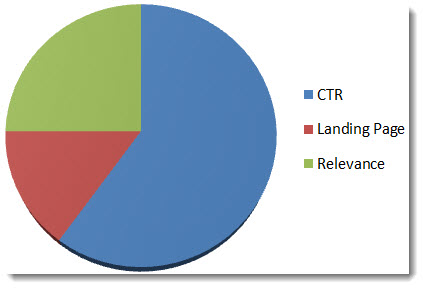How do you know your pay-per-click campaign is paying off? And what should you be looking for when evaluating a PPC campaign? When I ask new PPC clients this question, many focus solely on a low cost-per-click or the number of valuable conversions such as purchases, and form completions. And at the end of the day they would be right to an extent. Nothing matters more than visitors taking valuable actions on your website at an efficient cost.
However these measures can’t be relied on to tell the whole picture. PPC account managers would be making a big mistake by ignoring other important factors such as the click-through-rate (CTR).
What is a Click-Through-Rate?
The click-through-rate is a measure of how frequently an ad is clicked compared to how often it is seen. The CTR is calculated by:
Average click-through-rates vary greatly by industry, targeted geography, and competition. According to Google, the average industry CTR is between 1-2%.
Why Do Click-Through-Rates Matter for PPC?
In Google Adwords click-through-rates matter for 4 main reasons; the CTR is an indicator of strength of messaging, accurate targeting, can assist in guessing offline conversions, and maintaining a high CTR results in cheaper clicks.
1. CTRs Can Indicate Strong and Weak Messaging
Click-through-rates are useful in understanding how strong your advertising message is. Since CTRs are calculated by the frequency an ad is clicked when seen, it’s clear that ads featuring more enticing messaging will be clicked more frequently. This can be an especially useful tool when trying to understand what messages actually matter to your audience (You may be surprised!).
2. High CTRs Signify Accurate Targeting
The stronger your message is, the more frequently it will be clicked when seen. However, what happens if the audience you’re targeting is too wide? No matter how strong your message is, if it is being seen by the wrong audience it will receive a low CTR.
For example, if you are buying the keyword “Crown”, your ads may be seen by people looking for a dental crown or by people looking for a kings crown. No matter what one of these groups of people will be receiving irrelevant ads, reducing their likelihood of clicking on the ad (and lowering the CTR).
This becomes extremely important when you take into account that a small percent of clicks will always be accidental. If your campaign is operating with an extremely low CTR, these accidental clicks could potentially make up a large chunk of your overall clicks. For example if your campaign is receiving a CTR of 0.2% and 0.05% of all impressions resulted in accidental clicks, 1/4 of your budget would be wasted on clicks with little value.
3. The CTR Can Help to Predict Offline Conversions and Valuable Actions
The conversion rate cannot be relied on to tell the whole picture. There are many valuable actions that consumers may take that just can’t be accurately tracked online. For example:
- The conversion rate can’t be used to accurately track non-tangible benefits such as increasing brand awareness or the creation of new fans of the brand.
- Conversions are generally only trackable when a lead or sale starts and finishes online. Customers may decide to make a purchase while researching online, but then finish the purchase offline by phone or by visiting the physical location. Research from Google shows that only 44% of people that start their search online complete their purchase online.
The CTR can be used as an indicator of interest level, which can help to evaluate the likelihood of offline conversions. A campaign can only achieve a high CTR if the audience likes the messages used in the ads and the campaign is accurately targeted. This high CTR group would be a more engaged audience, making them much more likely to take valuable actions with your brand both online and offline.
4. Higher CTRs Reduce The Cost-Per-Click
Like most pay-per-click online marketing companies, Google Adwords operates by taking bids on words and phrases. The Adwords bidding process works by multiplying your chosen max bid price with Google’s interpretation of the quality of the ad (known as a quality score). According to Google, by far the largest factor in determining your quality score is the click-through-rate. Here are the other factors and how they compare:

Since bid position is determined by multiplying quality score and bid price, a higher quality score will reduce the amount of money needed to achieve the same ad position. This means maintaining a high click-through-rate will directly decrease your average cost-per-click.
There are a few cases where campaigns with a low click-through-rate can still be successful as a result of achieving an extremely low cost-per-click by targeting cheap words. However more often than not achieving and maintaining a high CTR is essential to being successful in pay-per-click internet marketing.
Mike Granger is an internet marketing mechanic at The Marketing Garage; an award-winning company of internet marketing and branding consultants based north of Toronto. Find out how a proven diagnostic approach can help you stop guessing and start knowing when it comes to your marketing. Visit www.TheMarketingGarage.ca



